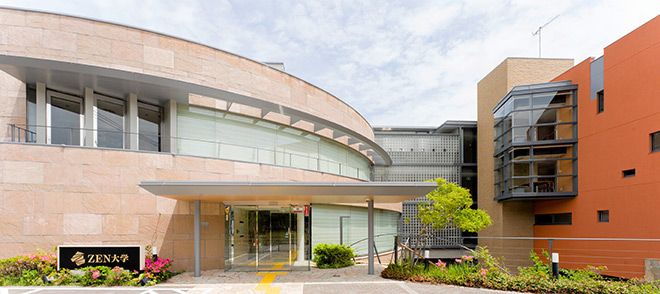Correspondence universities and courses have opened all over Japan, giving students the opportunity to study outside the classroom.
Since the end of the COVID-19 pandemic, students and teachers have become more comfortable with online classes, and the number of students enrolled in correspondence high schools has also increased.
School administrators believe this trend will also be replicated in higher education.
The tentatively named “Zen University,” scheduled to open next spring, will have a single faculty, the Department of Intelligent Information Sociology, and is expected to accept 5,000 students per year.
For a yearly tuition fee of 380,000 yen (2,400 dollars), students can acquire the literacy necessary for the information society.
The Nippon Foundation and information technology company Dwango have applied to operate a “Zen University” based in Zushi, Kanagawa Prefecture.
All courses are delivered online.
More than 100 people, including well-known personalities, will be appointed as faculty members.
Professor Yutaka Matsuo of the University of Tokyo and a renowned researcher in artificial intelligence (AI) has a research lab at Zen University as a special visiting professor.
The lecturers include legal expert Mayu Yamaguchi and mathematician Ivan Fesenko, who have both appeared on television frequently.
Junpei Sasakawa, executive director of the Nippon Foundation, which works to create a “third place” for troubled children outside of home or school, explained the decision as follows:
“We are keenly aware of the reality that children across the country are finding it difficult to learn within the framework of traditional school education,” Sasakawa said. “Some children cannot even consider going to college due to financial issues at home, and many students have dropped out of college due to the COVID-19 pandemic.”
Sasakawa said rent was a burden for students attending national and public universities.
“We need to create an environment where students can take courses on generative AI and other practical topics at an affordable price from the comfort of their own home,” he said.
In the Zen University plan, class coaches help students create their study plans, academic advisors help students study in a better environment, and career advisors guide students to pursue their desired career path.
In addition, the planned extracurricular programs prepare students for working conditions through socialization.
As part of their internships, students will visit local governments, companies, islands, etc., and the program also includes activities such as educational courses overseas and creative programs to nurture the next generation of creators.
“We also place importance on interaction between students and connections with the local community,” says Sasagawa. “Some people question whether we can attract 5,000 students. However, when you consider that about 30,000 students are studying at the correspondence schools N Junior High School, N High School, and S High School (run by Dwango), we believe that an online university is needed in this era where learning styles are diversifying.”
The number of students enrolled in correspondence high schools last year increased by 27,000 from the previous year to 265,000.
The number of students in university correspondence education departments last year increased by 22,000 from five years ago to 184,000. Of these, 34,000 were in the 18-22 age group, double the number from five years ago.
New universities and faculties
The other two companies also plan to open correspondence universities next spring, and some schools are establishing new correspondence faculties and departments.
This spring, Kyoto University of Arts added two new courses to its correspondence education programs: “Food Culture Design Course” and “Film and Video Course.”
The number of students in the school’s correspondence art department has reached 17,000, 2.3 times the number five years ago.
According to the university’s Admissions and Education Promotion Division, the Faculty of Fine Arts introduced a correspondence course in the 1998 academic year.
A new illustration course was established in fiscal 2021 amid the COVID-19 pandemic, but the organizers were surprised to see that a significant number of the 1,600 applicants were in their teens or early twenties.
Many of those who choose Kyoto University of the Arts are graduates of correspondence high schools, but there are also many who went on to other universities but dropped out because it was difficult for them to leave home.
“Until now, people who were seeking lifelong learning wanted to study here, but we have realized that students’ needs have changed recently. We have been actively visiting correspondence high schools to explore the possibility of cooperation, and starting this year we have strengthened our job-hunting support for students,” said the person in charge.
Those hoping to enter correspondence universities include the Faculty of Architecture at Kindai University in Higashiosaka City, Osaka Prefecture, the Faculty of Contemporary Business at Nagoya Sangyo University in Owariasahi City, Aichi Prefecture, and the Faculty of Information Science at Okayama University of Science in Okayama City.
Up to 7,000 students are expected to take the correspondence course, which is due to begin next spring.
Yoichi Takahashi, a professor of education at Musashino Art University and representative director of the group “University Distance Education,” which consists of universities with distance education courses, said the popularity of online classes during the pandemic has changed people’s perspectives on distance education.
“Distance education has already become one of the educational options for the younger generation,” Takahashi said. “Now that children who are not satisfied with the traditional education style are attending correspondence high schools in large numbers, there are high expectations for university correspondence education courses. At the same time, we want to thoroughly work to ensure the quality of education.”

